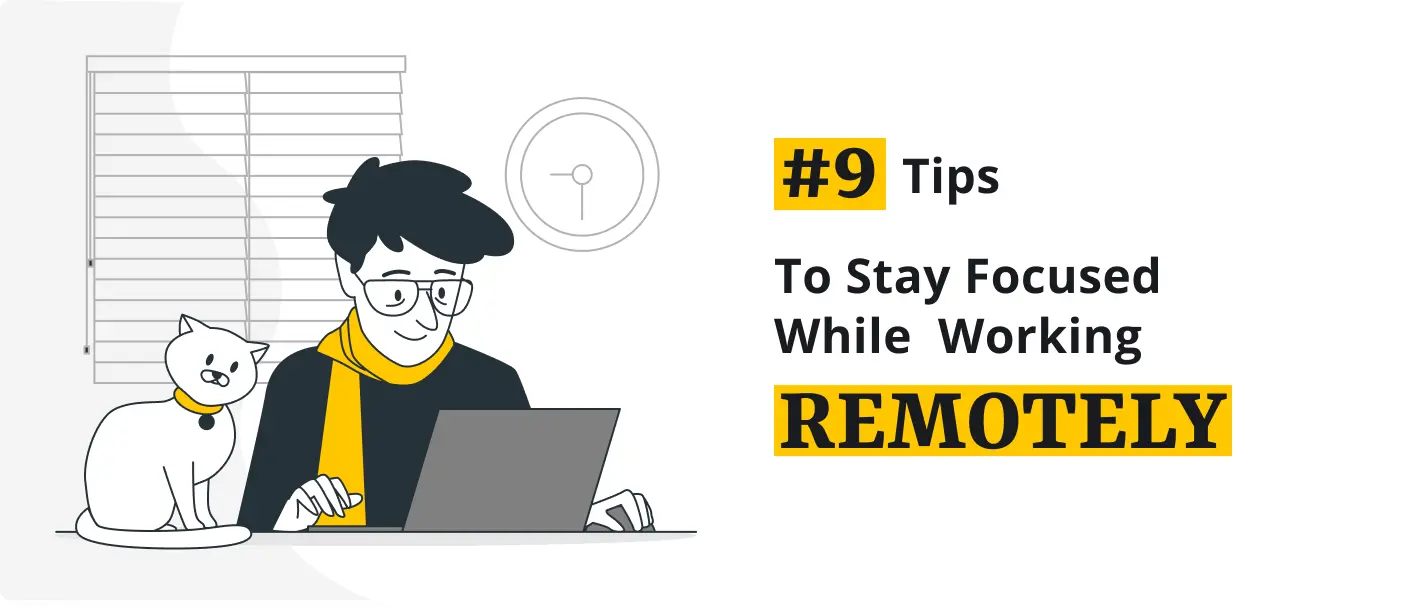
Nowadays, the key to organizations’ success isn't simply hard work; it's creativity as well – and you can’t be creative when you’re not doing quality work with a focused mind. Unfortunately, it’s sometimes hard to be focused in our always-connected culture, where Slack and other communication tools reign supreme.
If you’re working remotely, you don't have all the usual office distractions to deal with, but you still have the online distractions that make it hard to stay focused and creative. So here are some tips to help you concentrate:
1. Control your notifications
Notifications can be important in keeping you updated on what's happening, but they can also prevent you from staying focused on your tasks. I'm not just talking about social media notifications, but work notifications as well – like Slack and email. I know it's work, but it's still a distraction from your current focus – and that message you receive at 11 pm can wait until the next day.
With notifications on, you rarely have 2-3 hours of focused work. Depending on your job title and workload, you might get a couple of minutes or maybe half an hour at a maximum without interruption. And how can you generate great quality work with just a few minutes of focused time at different points throughout the day?
The idea here is that you should control when you reply to updates and requests about certain things, instead of replying to these updates randomly when they’re sent.
Try to schedule a time when you'll look at all your notifications – for example, commit to checking your email twice a day and your Slack every 1 or 2 hours.
2. Manage your team’s expectations
If you don't look at your notifications and therefore don't respond to your colleagues, this may mean you’re missing important updates or blocking your team. It’s understandable that they could be uncomfortable that you’re not available most of the time, but the key here is that you as a team manage expectations around when you can contact others without the need to be available all the time.
Consider introducing a “working with" document, in which everyone defines when they can respond to Slack notifications and emails, and what the urgent communication channel they can connect to everyone on is. By setting clear and practical communication times with your team, it'll help you focus and let them work with you easily.
3. Set clear boundaries
When you’re working remotely, it's easy to oscillate between work and personal time all day, with the result that you are never truly working or playing and can be left feeling burnt out. So it’s important to set boundaries between the two. This could involve working from a different place – like a cafe, workspace, or a separate room – or having a separate laptop for work and another one for personal use. Doing this means that when you leave your designated “place of work” or turn off your work laptop, you’re leaving work behind for the day and can take a proper break, ready to come back fresh in the morning and ready for the day.
4. Structure your day to make the most of your peak time
If you have a flexible working time policy, you don't have to stick to doing 8 hours of work in a single chunk. For example, I like to work 4-6 hours starting at 5 am, then spend some time with my family or to go to a swimming class, then go back and have my meetings before finishing for the day. So whether you like to work at night or in the morning, or just want to split your workday, it doesn't matter – just find your best focus time and restructure your day around it.
5. Change the mood
Sitting in the same place for 8 hours every day can be boring, so switch the mood up by working from different places or doing something new from time to time. Break up your routine by heading out for a walk or a coffee, either by yourself or with someone else. You could also choose to work from a different part of the office – or a different part of your remote workspace – every now and again in order to get a change of scenery. Whatever you choose to do, prioritize doing something fun and different to help you change the mood, clear your head and work with renewed focus and creativity.
6. Use distraction blocker software
Install a tool that blocks websites that distract you – including social media, YouTube, and news sites – to help you concentrate on your work. Applications like StayFocusd for Chrome or SelfControl for MacOS promote productivity by actively blocking you from wasting time on websites that aren’t work-related. You can set your own “banned” list of sites and also choose your own parameters to restrict the time you’re “allowed” to spend on them. Once your allotted time has run out, you’ll be blocked from wasting time on them and will be forced to focus on your work.
7. Have a distraction notebook
Even when external distractions aren’t an issue, sometimes you’ll remember an important task like replying to an email that you received last week, and you’ll immediately go to send that reply, leaving your current task in the process. There’s a cool trick to solve this problem, which is to have a distraction notebook beside you as you work or to download a to-do list app like Things or Todoist. You can then write down anything that comes to your mind while you’re working in this notebook or app, allowing you to stay focused on the task at hand and at the same time, ensure your thoughts won't be lost so you can get back to them later.
8. Put your tasks in your calendar
We usually only put our meetings in our calendars and not our tasks, which is why we stick to our meetings and not to the tasks that should be done on any given day. When you move from the typical to-do list to a task calendar, it helps you get clear in your mind how your day should go and helps keep you focused on your tasks.
9. Schedule focus days
Plan days with no meetings at all so you can focus on doing your work productively without talking to others too much. The more of these you can schedule, the better. For example, some entrepreneurs block out Monday and Thursday for team meetings and the rest of the week are my focus days, unless we have something urgent that we need to discuss, or if I'm blocking someone.
It’s harder than ever to stay focused at work these days, but once you’ve identified the major distractions that are keeping you from your tasks, there are plenty of tricks and tools you can use to set boundaries, reduce interruptions, and maintain your focus on the work at hand. Choose the ones that best fit your working style and watch both your creativity and productivity come on leaps and bounds.
